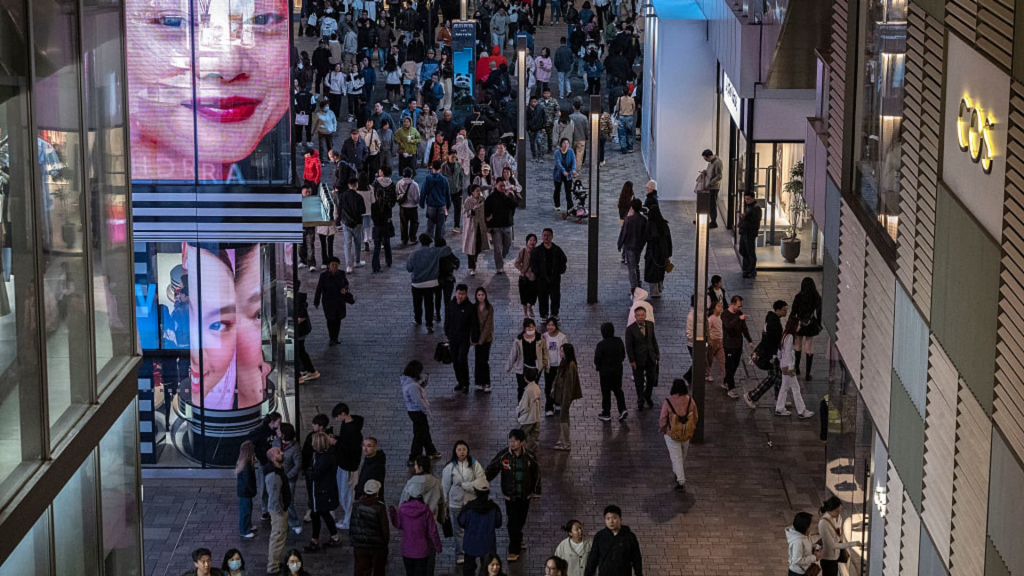TD Cowen collaborated with a Beijing-based advisory firm to conduct the survey in February 2025, following a similar assessment in May 2024. The analysts identified Apple as one of the brands relatively well-positioned in China, but cautioned that several other American companies are at significant risk, despite positive outlooks from their management. During a recent meeting, China’s top leadership acknowledged the growing impact of trade tensions and committed to implementing measures aimed at supporting struggling businesses, although they refrained from announcing extensive stimulus plans.
“This year’s survey took place prior to the escalation of the US-China trade war, but threats were anticipated,” the TD Cowen analysts noted. They indicated that the uncertainty surrounding these issues will likely influence consumer behavior moving forward, with households expected to exercise greater caution. The survey also revealed a decline in income expectations; the percentage of participants anticipating a decrease in pay over the next year rose from 6% to 10%. Notably, consumers expressed intentions to reduce spending on beauty products in the coming months, showing a shift towards favoring domestic brands.
In the beauty sector, U.S. cosmetic giant Estée Lauder maintained the highest recognition among Western brands in China; however, consumer preference fell to 19.6%, a significant drop from 24.3% the previous year. This decline contrasted with an increase in preference for competitors like Lancome and Chanel. For reference, Estée Lauder reported an 11% decline in net sales in the Asia Pacific region for the quarter ending December 31, which it attributed to “subdued consumer sentiment” in countries like mainland China, Korea, and Hong Kong. Asia Pacific accounted for 32% of the company’s total sales during this period.
The sportswear market also presented challenges for Nike, which lost significant consumer preference across various categories compared to the previous year. In contrast, local brands Li-Ning and Anta experienced growth, contributing to an analysis by TD Cowen that indicated Nike faces heightened earnings risk due to its substantial exposure in China—estimated at 15%. Despite Nike’s management characterizing the Chinese market as a promising opportunity for growth, they acknowledged that the macroeconomic environment is becoming increasingly difficult.
The survey emphasized that the factors at play extend beyond slower growth or rising nationalism. It found a decline of 4 percentage points in the preference for foreign apparel and footwear brands, while simultaneously revealing a 3-percentage-point increase in the inclination to purchase the “best” products, regardless of origin. “This suggests that Western brands may be perceived as offering less value or quality,” the analysts commented.
Starbucks, too, is grappling with intensified local competition, as it attempts to maintain prices significantly higher than those of rival Luckin Coffee. The report indicated that Starbucks “lags its peers in perceptions of value and quality,” with local brands such as Manner, Tim’s, Cotti, %Arabica, and M Stand expanding their presence in the Chinese market. In its quarterly report ending December 29, Starbucks noted a 6% year-over-year decline in same-store sales in China, reducing the region’s contribution to total revenue to just under 8%. Compounding concerns is the possibility that a forecasted coffee boom in China may not come to fruition. “We have observed a decline in the daily and weekly purchase frequency among coffee drinkers, indicating that the coffee culture prevalent in the U.S. is not establishing itself in China,” the analysts observed.
They suggested that a new ownership structure for Starbucks’ operations in China could positively influence stock performance, despite a lack of immediate catalysts for growth. TD Cowen assigned a “buy” rating to Starbucks, while issuing “hold” ratings for Nike and Estée Lauder.


























